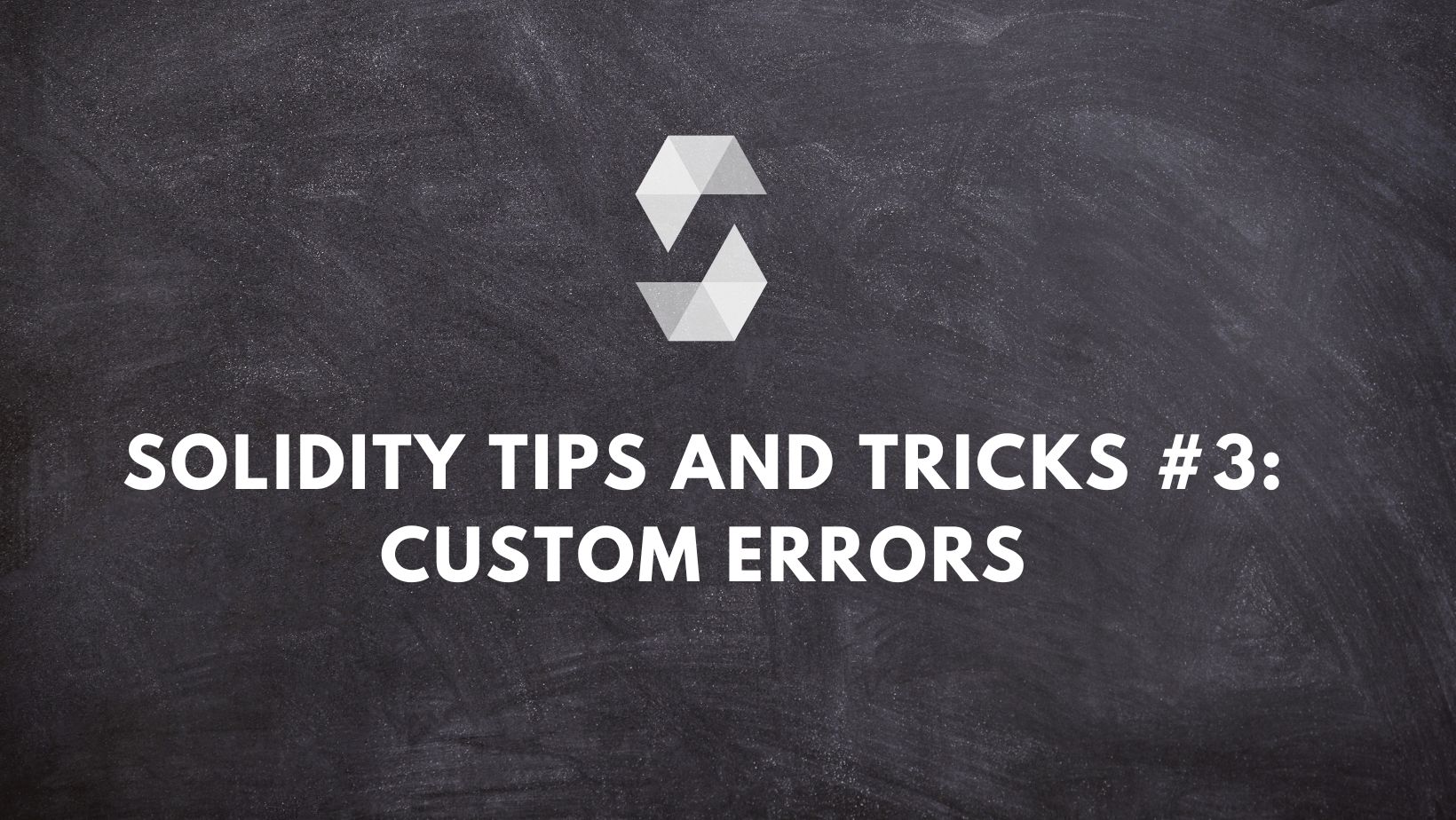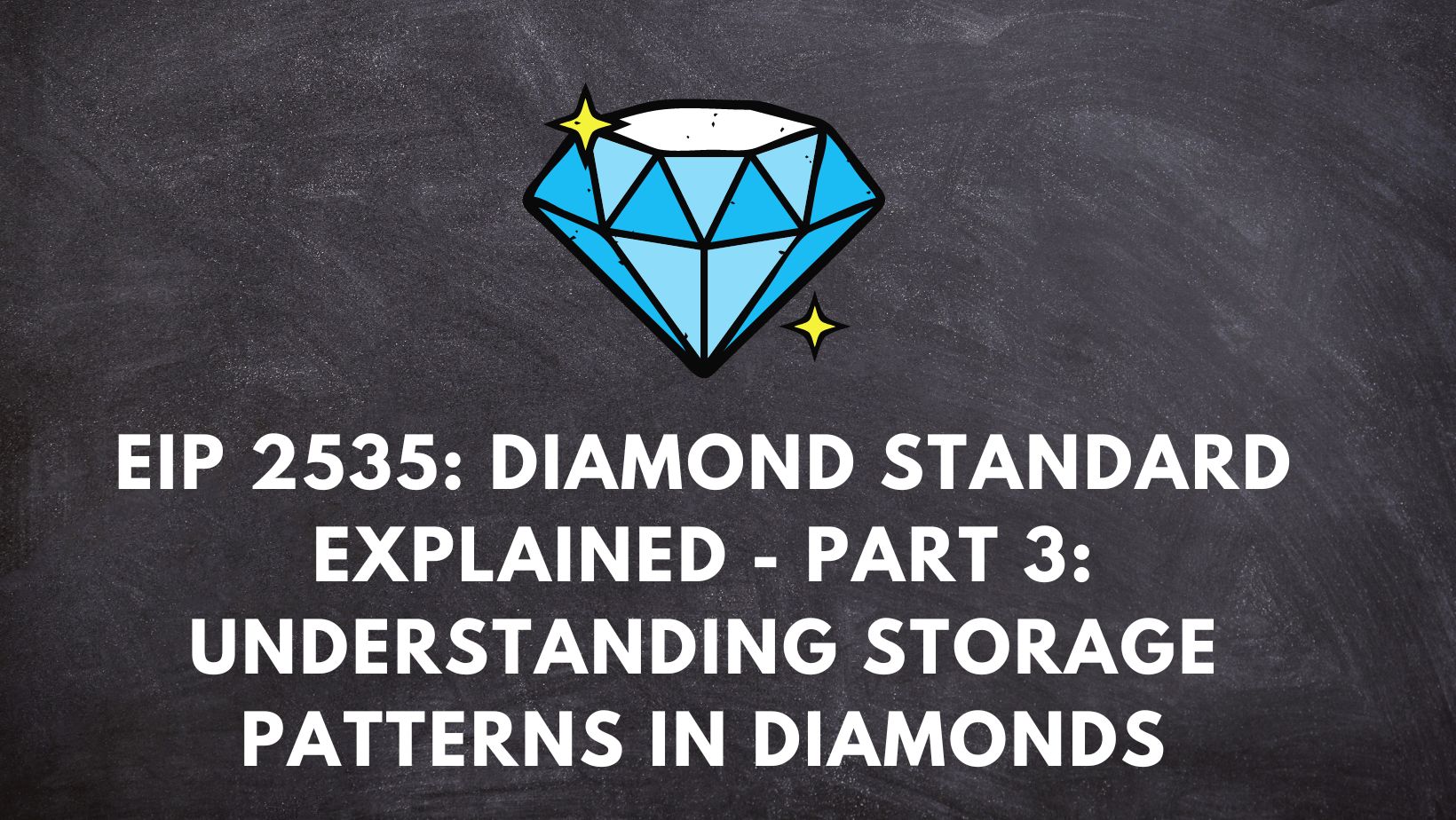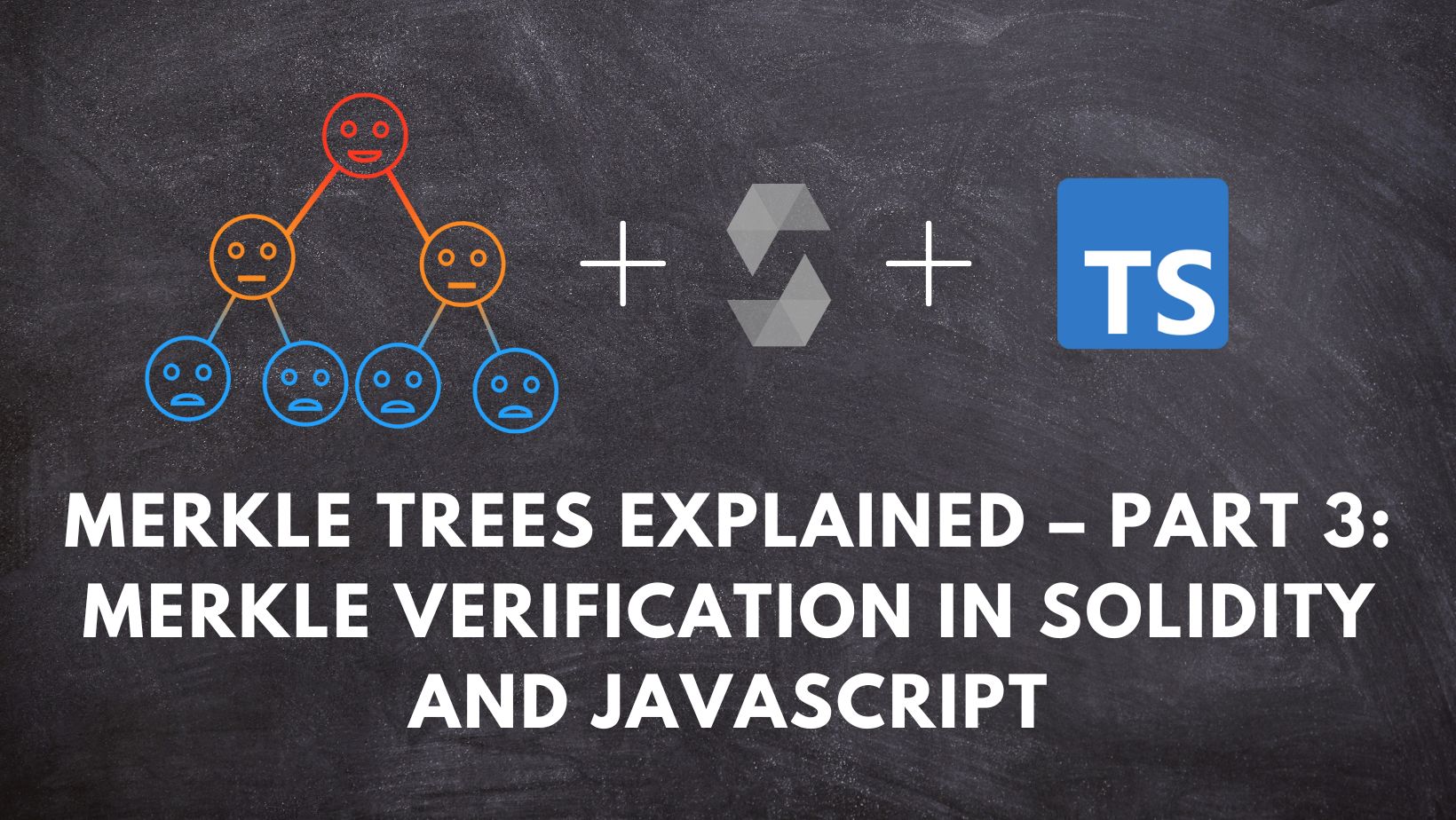Category: Ethereum smart contracts
-

How to access private data from a smart contract
One of the biggest advantages of blockchains or at least public blockchains is that they are “public”. Nothing can be hidden and all the transactions are publicly visible. If you are a smart contract developer, you must have heard about the access modifier and particularly the “private” access modifier. Access Modifiers in Solidity We know…
-

Solidity tips and tricks #3: Custom errors
Solidity v0.8 introduced a lot of interesting updates. We already covered the “Unchecked Arithmetic” concept in the first post of this series. Another interesting and handy feature introduced starting from v0.8.4 is “Custom errors”. Let’s explore how custom errors work. Errors in solidity When an error occurs in a transaction, it reverts all of the…
-

EIP 2535: Diamond standard explained – Part 3: Understanding storage patterns in diamonds
Okay, from Part 1 and Part 2 of this series, we know: Why EIP 2535 is required / used What is diamond standard and how the architecture looks like In this part, let’s try to explore what different storage patterns can be used in diamond standard. Storage patterns define rules for declaring state variables in…
-

EIP 2535: Diamond standard explained – Part 2: What are diamonds and how they work
In part 1 of this series, we tried to understand why the EIP-2535: Diamond standard is required. In short, this standard allows us to write “transparently” upgradable, flexible, modular and logically easy to maintain smart contracts. In this part, let’s understand exactly how diamonds enable all of this. What are diamonds? So following diagram represents…
-

EIP 2535: Diamond standard explained – Part 1: Why diamonds?
In this 4 part series, let’s dive deep into EIP-2535 Diamond standard and understand why diamonds, what are diamonds and how to use diamonds! One of the main USPs for smart contracts is that they are immutable. Being immutable has its own advantages by removing trust from the system. But from a developer’s point of…
-

Merkle trees explained – Part 3: Merkle verification in Solidity and Javascript
In Part 1 and Part 2 of this series, we have explored what are merkle trees, definition, concept and how merkle trees can be used to check the proof of inclusion. In this part, let’s checkout how we can perform merkle verification in smart contracts and in javascript. Merkle Verification in Smart contracts First thing…
